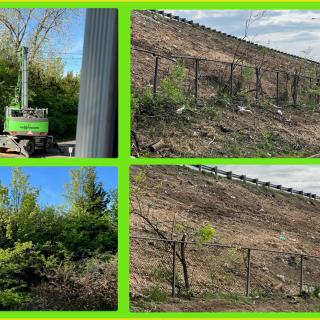Advertisement
Two to three years ago city parking officials and the Mayor’s Office began crafting the current Short North Parking Plan. Homeowners in the Short North aren’t entirely sure when the city began this round of planning because the city tried to keep it a secret from many Short North residents, this according to the activist group Preserve Short North Neighborhoods.
The city’s newest plan to ease parking in the Short North began in late January and many neighborhood homeowners say it sacrifices their interests to appease high-end developers.
“There was an enormous amount of secrecy around this,” says Mark Bocija, the homeowner who started Preserve Short North Neighborhoods. “They had been meeting for over a year with no discussion to residents. In fact, people on the planning committee were told not to tell any residents about it.”
Bocija says representatives from the Short North Civic Association and the Short North Alliance were on the planning committee, and they too must have been told to not alert residents because they never did.
“People who are deeply engaged with Short North civic affairs were participating in this plan that would really be detrimental to residents and we weren’t supposed to know about it,” he says.
After being told in confidence about what was going on, Bocija promptly called the city’s then-assistant Parking Director Amanda Ford. He asked Ford for the minutes to these meetings but she told him this particular committee didn’t have to release the minutes or report to residents about what they were planning.
Bocija began plastering notices across the neighborhoods. And once people were informed they were outraged. That’s how Preserve Short North Neighborhoods came about and after collecting 1,000 signatures two members of the org were allowed on the planning committee.
Bocija says what this (secret) committee was working on was much worse for residents than what has been put in place starting late January.
“So at these city meetings where they were going to roll out this plan lots of people came and shouted them down,” he says. “We actually got the first plan pulled and they dropped it.”
Even so, Bocija says the plan now in place is to accommodate developers who don’t want to provide parking garages for the public because there’s very little financial return.
To put it simply, he says, the city use to have a formula where developers had to provide X amount of public parking in the Short North, but the city, roughly two years ago, got rid of that so to allow them to provide less parking.
“Now there’s more pressure on street parking, which means and more competition for residents,” he says. “The whole parking plan is very much part of a larger plan to remove barriers from dense development. It’s not about enhancing residential life.”
Bocija has heard the city’s contention this is a First World, 2lst century problem that’s good to have because the city is growing and booming economically.
“This is an attempt to get people to think there’s nothing we can do. Like getting old or getting a cold. I really reject the notion that somehow we all have to accept that these are the inevitabilities of urban life,” he says. “Columbus is growing during a time when we can learn from all the problems other urban areas are trying to overcome. We don’t need to replicate those.”
The Free Press asked City of Columbus media reps were about claims of keeping Short North parking plans a secret from those neighborhood homeowners but we did not receive any response from then-Assistant Parking Director Amanda Ford, who still works for the city.
We did hear from City of Columbus current “parking czar” Robert Ferrin who confirmed those initial planning efforts included Short North civic associations and commissions.
“It has always been communicated to these groups to make sure the word gets out about the plan and that feedback received by these groups is funneled back to the city,” he said.
When Ferrin came on board in November of 2017 he said his first order of business was to talk to each past member of the working group and then make sure it accurately represented the neighborhood and business district.
“That did include the removal and addition of task force members and at that time several individuals (homeowners) were added,” he said.



